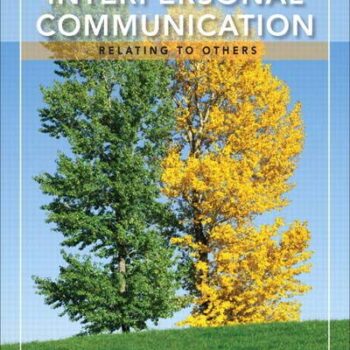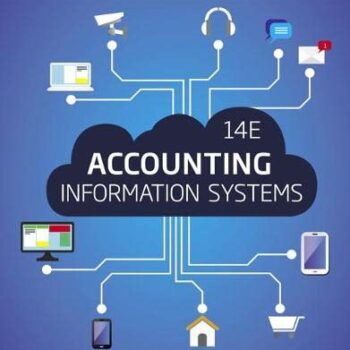
Test Bank For Network Security Essentials Applications and Standards 5th Edition By Willaim Stallings
Original price was: $115.00.$30.00Current price is: $30.00.
Digital item No Waiting Time Instant DownloadISBN-10:0133370437 ISBN-13:978-0133370430
Hello and welcome to our store! History has been made for today, we present to you the Test Bank for Network Security Essentials: Applications and Standards 5th Edition by William Stallings. This test bank will help you in every way needed to learn the art of network security and enhance your learning.
Top 5 Reasons About Why Our Test Bank is a Good Purchase
Network security and cyber-attacks are no wonder a source of rising concern however this test bank makes it easy. It will assist you in the thorough revision of textbook contents through a host of questions from the exam banker that revolves around the key concepts of the book thus making it easy for you to tone yourself up for the examination.
Our Test Banks Include the Following Attributes
- Detailed Scope Content: Our test bank contains almost all the concepts and topics that were emphasized in the test books. It explains every aspect comprehensively and the most advanced topics have also been included meaning you will not be lacking anything.
- Balanced Representation of Questions: There are true/false, multiple choice, and essay structure questions. Such an assortment guarantees that you will be evenly prepared for any exam.
- Focused/Specific Description of Questions: Each question has a detailed explanation attached to it. This helps one to comprehend the concepts and assimilate even more information.
Key Topics Covered
- Cryptographic Techniques: Topics that will be discussed in this section include encryption, decryption, and cryptography techniques which assist in the protection of information.
- Network Security Protocols: A comprehensive guide to recognized protocols like SSL / TLS, and IPsec and how they can be utilized in the facilitation of data security during sharing.
- Firewalls and Intrusion Detection Systems: Investigation of firewall features and their role to run a remit that prohibits access without permission as well as weaponry detection.
- Authentication and Access Control: Examination of possible means of individuals’ verification and the eventual access control to resources.
- Security Management and Policies: Provide ideas on how strategic security measures and practices can be applied toward constructing and executing relevant policies.
How to Use the Test Bank
Using the test bank is simple. Carry out the post test but only after you have finished studying a particular chapter. Practice is what will help you apply your skills and thus boost your confidence. During tests, you could practice self-discipline by restricting yourself with regard to duration and this will improve your organization.
Benefits of Our Test Bank
- Better Learning: With more different questions in front of you, your knowledge of the broad field of network security will increase. You will have no worries when it comes to taking the tests.
- Efficient Study: Effectual practice makes sure you can study and cover more limited content. Firm lessons encourage one to work particularly on their weak side. This way, one studies effectively.
- Improved Grades: Regular preparation and practice with our test bank can help improve exam performance. The more you practice, the easier it becomes to learn the subjects which can increase your scores.
Our Commitment To Quality
Providing quality education resources is our prime focus. We regularly update our test bank as per the current edition of the textbook. This helps you have the most appropriate material.
Our Users Experience With Us
Most of the students have utilized our test bank to perform well in their network security courses. Through practice questions provided, they’ve managed to conquer complicated topics and boost their grades with ease. By using our test bank, you become part of successful students.
Recommendations When Learning
- Create A Plan: Have a scheme when you intend to carry out the learning process. It is important to engage in regular practice of the material.
- Concentrate on Strong Areas: Look for the broader vision test bank but focus on the narrower topics that you struggle with.
- Practice Making Time: Try to practice under timed conditions, so that you get used to the time pressure during an exam.
- Consistent Practice: Try and practice over questions many times before moving on to another topic.
Things That Make Us Unique
Our test bank is not merely a list of items; it is a value-based system aimed at assisting you in acing examinations. Our focus is on excellence and relevance so that you do not lack resources at any point in time.
Become A Part Of Our Learning Community.
In selecting our test bank, you are not just buying a product; you are becoming a member of a learning organization geared toward success. Let us also assure you that we will be with you all the way.
Conclusion
The Test Bank for Network Security Essentials: Applications and Standards 5th Edition by William Stallings is one resource that should be utilized by anyone wishing to make a breakthrough in the discipline of network security. It has been specifically created to assist your education and ensure academic triumph.
Test Bank For Network Security Essentials Applications and Standards 5th Edition By Willaim Stallings
Chapter 2: Symmetric Encryption and Message Confidentiality
TRUE OR FALSE
T F 1. Public-key encryption is also referred to as conventional
encryption, secret-key, or single-key encryption.
T F 2. The advantage of a block cipher is that you can reuse keys.
T F 3. Ciphertext is the scrambled message produced as output.
T F 4. The security of symmetric encryption depends on the secrecy of
the algorithm, not the secrecy of the key.
T F 5. The ciphertext-only attack is the easiest to defend against because
the opponent has the least amount of information to work with.
T F 6. The Feistel structure is a particular example of the more general
structure used by all symmetric block ciphers.
T F 7. Smaller block sizes mean greater security but reduced
encryption/decryption speed.
T F 8. The essence of a symmetric block cipher is that a single-round
offers inadequate security but multiple rounds offer
increasing security.
T F 9. Triple DES was first standardized for use in financial applications
in ANSI standard X9.17 in 1985.
T F 10. The most commonly used symmetric encryption algorithms are
stream ciphers.
T F 11. The principal drawback of 3DES is that the algorithm is relatively
sluggish in software.
T F 12. AES uses a Feistel structure.
T F 13. Random numbers play an important role in the use of encryption
for various network security applications.
T F 14. The primary advantage of a stream cipher is that stream ciphers
are almost always faster and use far less code than do block
ciphers.
T F 15. One desirable property of a stream cipher is that the ciphertext be
longer in length than the plaintext.
MULTIPLE CHOICE
- A symmetric encryption scheme has _________ ingredients.
A. three B. six
C. five D. four
- _________ is the original message or data that is fed into the algorithm as input.
A. DES B. Plaintext
C. Encryption key D. Ciphertext
- _________ mode requires only the implementation of the encryption algorithm and not the decryption algorithm.
A. CBC B. DKS
C. ECB D. CTR
- A __________ processes the input elements continuously, producing output one element at a time, as it goes along.
A. block cipher. cryptanalysis
C. keystreamD. stream cipher
- If both sender and receiver use the same key the system is referred to as _________ encryption.
A. asymmetric. two-key
C. symmetric. public-key
- If the sender and receiver each use a different key the system is referred to as __________ encryption.
A. secret-keyB. conventional
C. single-keyD. asymmetric






